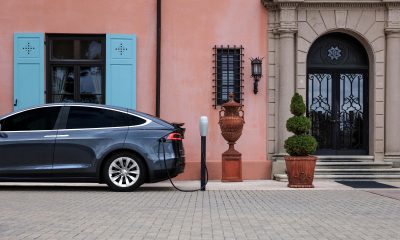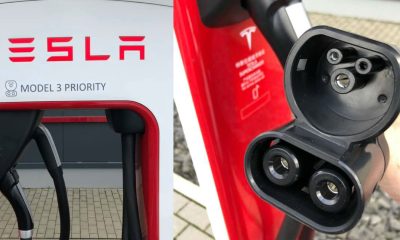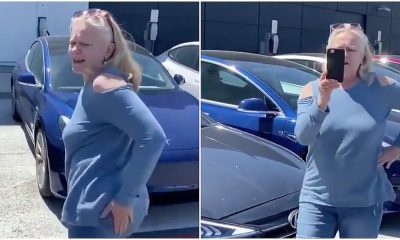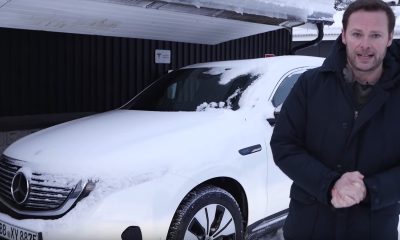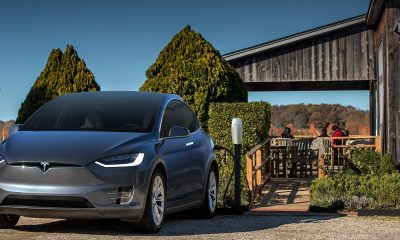News
Tesla Introduces Destination Charging in Europe
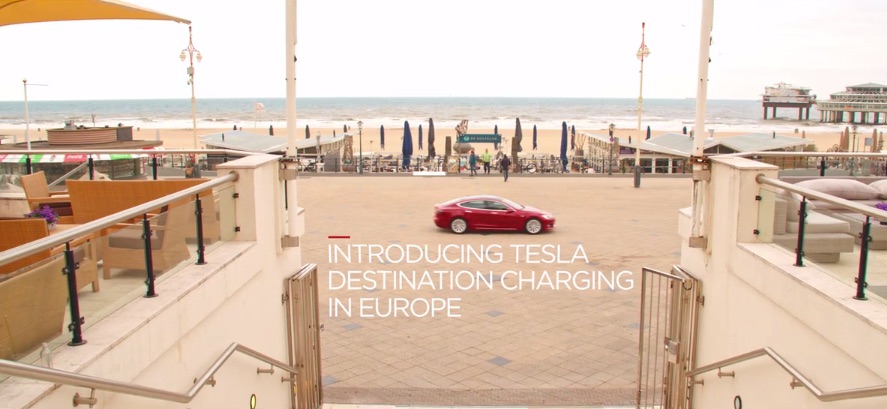
Tesla Motors tweeted today that there are now 150 destination charger locations available in Europe. Details about the destination charging program found on the company’s website indicate, “Tesla partners with hotels, restaurants, shopping centers and resorts to make charging when you arrive at your destination as simple as charging at home. Pull up and plug into a Tesla wall connector to charge Model S while you shop, dine, or even during an overnight stay.”
Now Tesla owners across Europe can plug in at their favorite hotels & restaurants https://t.co/bh3xmNj5qK pic.twitter.com/OXONr2AJSG
— Tesla (@Tesla) April 25, 2016
This development dovetails nicely with Tesla’s announcement in January that it is pushing ahead with plans to expand its Supercharger network in Europe to cover under-served countries like Spain, Portugal, and Italy before moving into central Europe and Russia.
While destination charger locations operate at lower power than Superchargers, they are more than adequate to give a significant boost in available range if a car is going to remain stationary for 60 minutes or more. When located at a hotel or B&B, they virtually ensure a fully charged battery in the morning o.
ALSO SEE: How do I become a Tesla Destination Charging partner?
Last week in Oslo, Elon Musk told an audience at the Future of Transportation conference that other manufacturers are welcome to use Tesla’s Supercharger network. He said Tesla is working with Mercedes and others to work out a way to share Supercharger facilities. This is the second time he has emphasized that point, both times while visiting Europe. The first time he did so was while addressing a crowd of well wishers at a Tesla store in Paris. Tesla elected to make all its patents public last year in order to encourage others to build electric cars.
With the Model 3 now just 18 months away from production, some Tesla owners worry that Supercharger locations will become crowded, with long lines of Teslas waiting to recharge. It seems hard to believe that Musk and Tesla have not already thought of that and formulated a plan to prevent overcrowding.
It would help a great deal if other manufacturers would step up and make a contribution to charging infrastructure commensurate with what Tesla has done.
Image source: Tesla Motors
News
Tesla expands Robotaxi geofence, but not the garage
This has broadened its geofence to nearly three times the size of Waymo’s current service area, which is great from a comparative standpoint. However, there seems to be something that also needs to be expanded as the geofence gets larger: the size of the Robotaxi fleet.
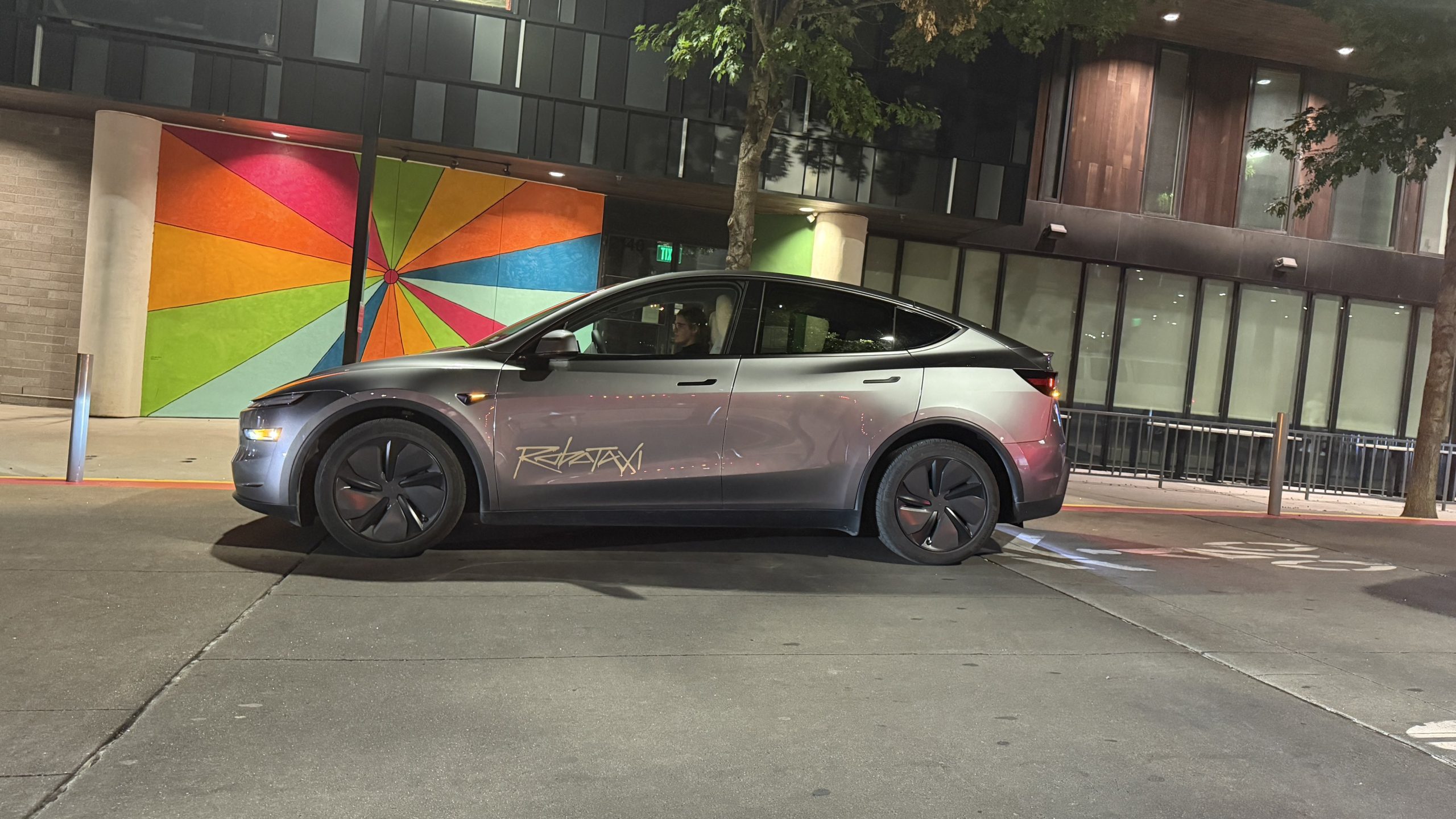
Tesla has expanded its Robotaxi geofence four times, once as recently as this week.
However, the company has seemingly kept its fleet size relatively small compared to the size of the service area, making some people — even pro-Tesla influencers — ask for more transparency and an expansion of the number of vehicles it has operating.
Over the past four months, Tesla has done an excellent job of maintaining growth with its service area in Austin as it continues to roll out the early stages of what is the Robotaxi platform.
The most recent expansion brought its size from 170 square miles (440.298 sq. km) to 243 square miles (629.367 sq. km).
Tesla sends clear message to Waymo with latest Austin Robotaxi move
This has broadened its geofence to nearly three times the size of Waymo’s current service area, which is great from a comparative standpoint. However, there seems to be something that also needs to be expanded as the geofence gets larger: the size of the Robotaxi fleet.
Tesla has never revealed exactly how many Model Y vehicles it is using in Austin for its partially driverless ride-hailing service (We say partial because the Safety Monitor moves to the driver’s seat for freeway routes).
When it first launched Robotaxi, Tesla said it would be a small fleet size, between 10 and 20 vehicles. In late August, after its second expansion of the service area, it then said it “also increased the number of cars available by 50 percent.”
The problem is, nobody knows how many cars were in the fleet to begin with, so there’s no real concrete figure on how many Robotaxis were available.
This has caused some frustration for users, who have talked about the inability to get rides smoothly. As the geofence has gotten larger, there has only been one mentioned increase in the fleet.
Trying to book a RoboTaxi in the new geofence and can’t get paired with a car.
Really think Tesla needs to add more cars to the fleet in Austin. Has become tougher and tougher to use the service reliably @elonmusk pic.twitter.com/KHqea3oUxU
— Farzad (@farzyness) October 29, 2025
Tesla did not reveal any new figures or expansion plans in terms of fleet size in the recent Q3 Earnings Call, but there is still a true frustration among many because the company will not reveal an exact figure.
News
Tesla recalls 6,197 Cybertrucks for light bar adhesive issue
On October 20, Tesla issued a voluntary recall of the impacted vehicles and has identified 619 warranty claims and just a single field report that is related to the issue.
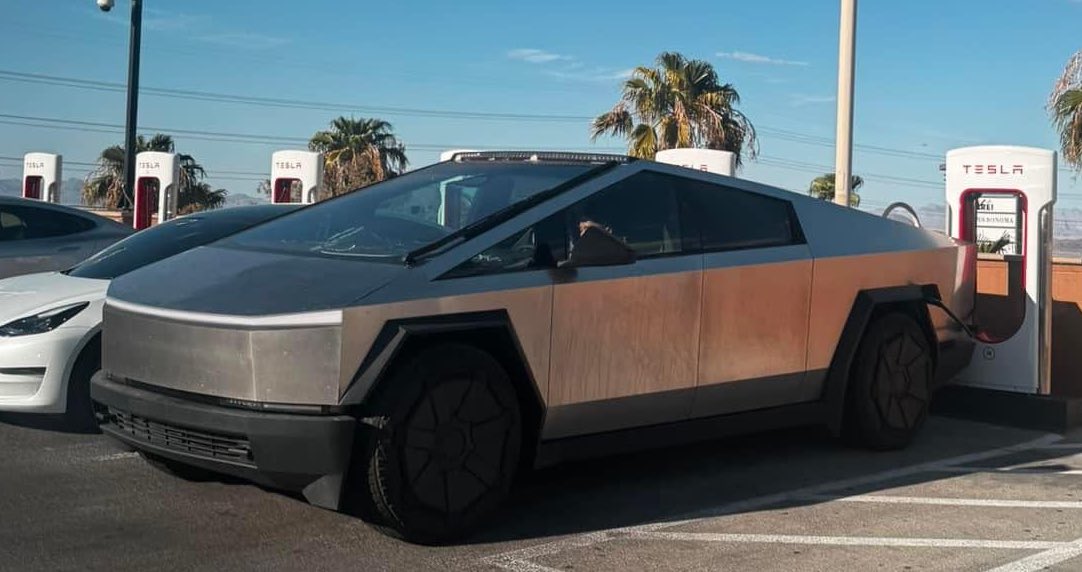
Tesla has recalled 6,197 Cybertrucks for a light bar adhesive issue that was utilized by Service to install the aftermarket part.
According to the National Highway Traffic Safety Administration (NHTSA), impacted vehicles may have had the light bar “inadvertently attached to the windshield using the incorrect surface primer.”
Tesla identified an issue with the light bar’s adhesion to glass back in February and worked for months to find a solution. In October, the company performed chemical testing as a part of an engineering study and determined the root cause as the BetaPrime primer it utilized, figuring out that it was not the right surface priming material to use for this specific application.
On October 20, Tesla issued a voluntary recall of the impacted vehicles and has identified 619 warranty claims and just a single field report that is related to the issue.
The component is manufactured by a Romanian company called Hella Romania S.R.L., but the issue is not the primer’s quality. Instead, it is simply the fact that it is not the correct adhesive for this specific type of application.
Tesla says there are no reports of injuries or deaths due to this issue, and it will be resolved. In the 473 report that the NHTSA released this morning, Tesla said:
“At no charge to customers, Tesla will inspect the service-installed optional off-road light bar accessory for delamination or damage and if either is present, replace the light bar with a new light bar adhered with tape and a positive mechanical attachment. If no delamination or damage is present, Tesla will retrofit the service-installed optional off-road light bar accessory with a positive mechanical attachment.”
This is the third recall applied to Cybertrucks this year, as one on March 18 highlighted the potential for exterior trim panels to detach while driving, and another earlier this month when the NHTSA said its front parking lights were too bright.
Tesla resolved the first with a free assembly replacement, while the headlight issue was fixed with an Over-the-Air software update earlier this week. Owners said there was a noticeable difference in the brightness of the lights now compared to previously.
Investor's Corner
Tesla investor Calpers opposes Elon Musk’s 2025 performance award
Musk’s 2025 pay plan will be decided at Tesla’s 2025 Annual Shareholder Meeting, which will be held on November 6 in Giga Texas.

One of the United States’ largest pension funds, the California Public Employees’ Retirement System (Calpers), has stated that it will be voting against Elon Musk’s 2025 Tesla CEO performance award.
Musk’s 2025 pay plan will be decided at Tesla’s 2025 Annual Shareholder Meeting, which will be held on November 6 in Giga Texas. Company executives have stated that the upcoming vote will decide Tesla’s fate in the years to come.
Why Calpers opposes Musk’s 2025 performance award
In a statement shared with Bloomberg News, a Calpers spokesperson criticized the scale of Musk’s proposed deal. Calpers currently holds about 5 million Tesla shares, giving its stance meaningful influence among institutional investors.
“The CEO pay package proposed by Tesla is larger than pay packages for CEOs in comparable companies by many orders of magnitude. It would also further concentrate power in a single shareholder,” the spokesperson stated.
This is not the first time Calpers has opposed a major Musk pay deal. The fund previously voted against a $56 billion package proposed for Musk and criticized the CEO’s 2018 performance-based plan, which was perceived as unrealistic due to its ambitious nature at the time. Musk’s 2018 pay plan was later struck down by a Delaware court, though Tesla is currently appealing the decision.
Musk’s 2025 CEO Performance Award
While Elon Musk’s 2025 performance award will result in him becoming a trillionaire, he would not be able to receive any compensation from Tesla unless aggressive operational and financial targets are met. For Musk to receive his full compensation, for example, he would have to grow Tesla’s market cap from today’s $1.1 trillion to $8.5 trillion, effectively making it the world’s most valuable company by a mile.
Musk has also maintained that his 2025 performance award is not about compensation. It’s about his controlling stake at Tesla. “If I can just get kicked out in the future by activist shareholder advisory firms who don’t even own Tesla shares themselves, I’m not comfortable with that future,” Musk wrote in a post on X.
-

 Elon Musk2 weeks ago
Elon Musk2 weeks agoSpaceX posts Starship booster feat that’s so nutty, it doesn’t even look real
-

 Elon Musk2 weeks ago
Elon Musk2 weeks agoTesla Full Self-Driving gets an offer to be insured for ‘almost free’
-

 News2 weeks ago
News2 weeks agoElon Musk confirms Tesla FSD V14.2 will see widespread rollout
-

 News2 weeks ago
News2 weeks agoTesla is adding an interesting feature to its centerscreen in a coming update
-

 News2 weeks ago
News2 weeks agoTesla widens rollout of new Full Self-Driving suite to more owners
-

 Elon Musk2 weeks ago
Elon Musk2 weeks agoTesla CEO Elon Musk’s $1 trillion pay package hits first adversity from proxy firm
-

 News2 weeks ago
News2 weeks agoTesla might be doing away with a long-included feature with its vehicles
-
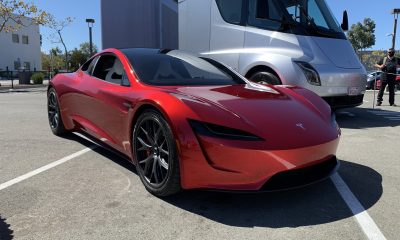
 News1 week ago
News1 week agoTesla updates fans on its plans for the Roadster


